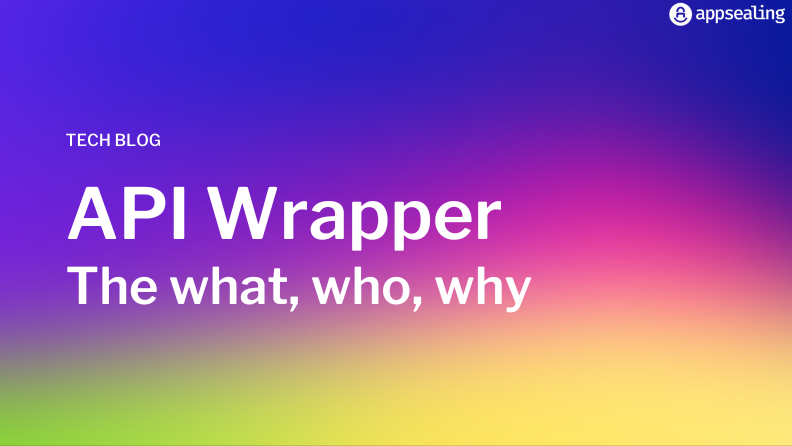An application programming interface (API) is simply a set of tools that helps build application softwares. It also enables easy communication between different applications and tells them what to do to get the desired output. Specifically, they help retrieve data from web services or apps. But they all come with different functionalities and complexity levels. An API wrapper helps wrap the app or mask it while enabling the conversion of data into compatible formats and simplifying complicated tasks through abstraction.
API Wrapper
The task of an API wrapper is to simplify a developer’s time. It encapsulates multiple API calls into a single service, saving time and energy. If a developer wants to access a specific part of an application that would otherwise require calling an API multiple times, with the wrapper, a developer can simply call the application once (while the wrapper combines the API calls into a single function).
What Does an API Wrapper Do?
A simple answer to this – easing the access to specific standard functions. Complicated tasks are simplified and error handling tasks are smoother. For example, an API might otherwise keep throwing an error when prohibited inputs are provided. But with an API wrapper, the inputs are validated and unallowed characters are eliminated so making a call or providing a request to an app becomes easier and, of course, quicker.
How Can One Use an API Wrapper?
The most efficient way of using an API wrapper is to combine multiple API calls into a single function instead of calling separate APIs. It can also be used to return data in a familiar data structure which is different from the usual individual structures of multiple APIs. This would help make it easier for you to work with multiple APIs. Everything is fetched through a single package.
How to Build an API Wrapper?
Building an API wrapper is easy if you follow all the steps laid out as below:
- Check if you have all the packages you need
- Create a new project to get started
- Run usethis::use_data_raw() and run the below script:
library(devtools)
library(usethis)
library(desc)
# Remove default DESC
unlink(“DESCRIPTION”)
# Create and clean desc
my_desc <- description$new(“!new”)
# Set your package name
my_desc$set(“Package”, “yourpackage”)
#Set your name
my_desc$set(“Authors@R”, “person(‘Colin’, ‘Fay’, email = ‘contact@colinfay.me’, role = c(‘cre’, ‘aut’))”)
# Remove some author fields
my_desc$del(“Maintainer”)
# Set the version
my_desc$set_version(“0.0.0.9000”)
# The title of your package
my_desc$set(Title = “My Supper API Wrapper”)
# The description of your package
my_desc$set(Description = “A long description of this super package I’m working on.”)
# The urls
my_desc$set(“URL”, “http://this”)
my_desc$set(“BugReports”, “http://that”)
# Save everyting
my_desc$write(file = “DESCRIPTION”)
# If you want to use the MIT licence, code of conduct, and lifecycle badge
use_mit_license(name = “Colin FAY”)
use_code_of_conduct()
use_lifecycle_badge(“Experimental”)
use_news_md()
# Get the dependencies
use_package(“httr”)
use_package(“jsonlite”)
use_package(“curl”)
use_package(“attempt”)
use_package(“purrr”)
# Clean your description
use_tidy_description()
- Get the API url either by building url from url.and/path/to/the/data or by using parameters from url.that/q=this&data=that
- Check for utilitary functions to check basic things like internet connection
- Use the GET function from {httr} to call the API using a script like:
httr::GET(url = base_url, query = list(q = “Yeaye”)) - Run Roxygenise using the following script to get your working package: roxygen2::roxygenise()
- Test and build your package using:
-
- devtools::check()
- devtools::build()
- Next, write the ReadMe, Vignette and tests
API wrappers are great, but mobile application security is equally important too:
API wrappers are very efficient tools when it comes to saving time. They also make it easier for developers to call other APIs in a seamless fashion without having to rewrite code to call multiple APIs and sections within APIs. Simply combine all of the calls and let the API wrapper do all the work for you. Though this is more efficient, you cannot forget about safety. While interacting with multiple applications is great, one key component that cannot be neglected is security of applications, especially when working with other applications. For this, you need expert advice and guidance from an app security solution expert like AppSealing. We provide complete mobile application security solutions which can make working on and with other applications super easy and extremely safe. With a wide range of industries covered like fintech, gaming, movies and O2O, companies can rest assured about their application security and focus on developing world class features for their customers. Call us or request for a demo to get started!






